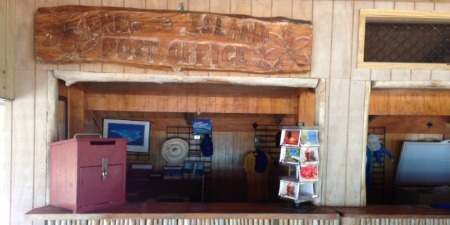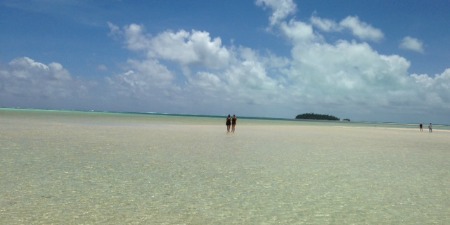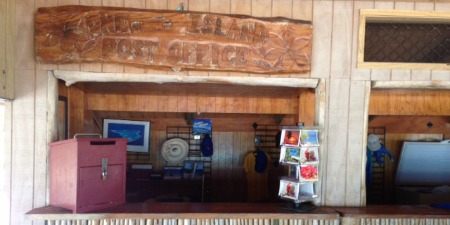Cook Islands: A Food Lover's Paradise
The Cook Islands have a grand total of 10,9000 people. That's smaller than many Podunk towns I've visited and let me just say, I didn't go to those rural getaways for the food. Most small towns, at least the ones in my state of Kansas, are lucky if they have a diner selling greasy burgers.
So you can imagine my surprise when I found out that Cook Islands cuisine is, quite seriously, exceptional. In fact, I would happily include it on my Top Ten List of International Food Destinations.
The 15 islands that make up the Cooks are tiny. You can drive around the largest one, Rarotonga, in about 45 minutes and that's only because you're guaranteed to get behind a motor scooter driving 20 miles per hour. If you drove like a typical Westerner sans scooter, you could easily circumvent it in 25 minutes. But that's part of the Cooks' appeal — nobody is in a hurry to get anywhere. Cops with radar are like the Maytag repairmen.
But the food on those 15 tiny spits of land set out over 756,000-square-miles of South Pacific, most of which is protected as a marine park, is truly (and I don't say this lightly) remarkable.
Pam Grout
My mouth is watering just thinking about the ika mata, the island specialty that's served in nearly every home, restaurant and, most famously, at Avarua's big Saturday market. It's made from raw fish, marinated in lime juice and served cold with coconut cream. Talk about local. It's not unusual for the fish, often tuna, to be plucked right out of the sea while you wait. This gorgeous, every-shade-of-blue ocean (often with the sun dropping below its horizon) was the backdrop for literally every meal I ate in the Cook Islands.
And then there's the jungle food. Yes, it's a must to pull yourself away from the white sand beaches to brave Rarotonga's rugged, volcanic interior. My group of four took individual ATV's, crossing more than 20 streams and creeks to traverse countless mountain trails. We sampled all the familiar tropical fruits — bananas, mangos, and papayas (only, like the New Zealanders that protect this little chain of islands, they call them pawpaws). But we also enjoyed more obscure fruits such as guava, graviola, and carambola, the fruit we call star fruit and don't particularly like, because when it's shipped that far, it loses its flavor. But in the Cook Islands, it's so good.
The Cook Islands have more than a few restaurants set right on plantations and gardens where chefs give tours before blessing you with a three- or four-course meal. It's paradise incarnate for anyone wanting to know from whence their food hails.
Another specialty in the Cooked Islands is iced coffee, about which I have but one thing to say. Where have you been all my life? Iced coffee, I always thought, was regular espresso poured over ice. In the Cook Islands, or at least in Rarotonga, iced coffee is espresso served with a dollop of ice cream. It puts lattes, mochas, and other cream-based coffees to shame.
The local beer, Matutu (it means strong in Maori), is also memorable and since it sometimes runs out (twice we were disappointed to hear our server say, "I just sold the last bottle."), there are also bush beer clubs, particularly on the island of Atiu (it sounds like "achoo"), a small, rocky island with limestone caves and a coffee plantation.
Pam Grout
Like many Polynesians, Cook Islanders once enjoyed a milky drink made from kava root, but when missionaries showed up, all the "evil," mind-altering plants were destroyed. So Cook Islanders, being no fools, invented what's now known as bush beer. Like kava, it's homemade, concocted from oranges, malt, yeast, and sugar and particularly fun to drink at one of six Atiu Island tumunus because you can toast and high-five with locals, mainly men who, when tourists aren't around, conduct important tribal business.
One piece of tribal business that Westerners have yet to be privy to is the curse put on a Sheraton Hotel that was trying to invade Rarotonga. I don't know much about curses (and I'm happy to report that Cook Islanders gave up eating people about the same time all the kava plants were burned), but that Sheraton Hotel was never finished. Its skeleton still sits on Rarotonga, and from what I hear, Hilton tried to take over after the Sheraton's ill-fated entry into the tourism market and had no better luck. This means that not one hotel there — and there are many gorgeous five-star hotels — is owned by a big corporation. Do you know how special that makes the Cook Islands?
Let me repeat — there are no chains. Just lots of chickens wandering the one road that circles the island. There are two buses, by the way — the clockwise bus and the anti-clockwise bus, the latter named because counter-clockwise was too long to fit on the front. One day our driver hit one of the chickens and said, in her wonderful New Zealand accent, "Oh well, shame. It must have been its time to go."
We did notice that 15 minutes later, when we returned, the chicken had been picked up and we assumed thrown into someone's pot.
But back to food and the three things that every self-respecting food lover should put on their bucket list:
- The Plantation House. This 1853 colonial home, one of the oldest on the island, opens its doors one night (sometimes two) a week. Count your blessings if you get in. At 5 p.m. on that night (usually Tuesday), you show up for a tour of Louis Enoka and Minar Henderson-Enoka's plantation followed by a three-course organic dinner, served on a puka-shaded veranda. Depending on the season, you'll enjoy anything from fish with chile and lime wrapped in banana leaves and tuna carpaccio with passion fruit dressing, capers, and wild basil to local pork curry with coconut and green pawpaw salad. Every dish is from their jungle garden (including the chicken and the pigs). After desert, often coconut meringue cake with Kaffir lime curd or lime cheesecake, you can enjoy the gift shop the industrious couple built with timber recycled from the old St. Joseph's School. Called Islands Living, the shop sells handmade Cook Island products, things like pearl jewelry, rito hats, hand-sewn pareus, and Noni juice and soap.
- Te Punanga Nui Market. Open every Saturday morning, this flea market/arts and crafts fair offers piles of pineapples, passion fruit and other local produce, nu (the juice of a young coconut), tropical flowers (birds of paradise, red ginger, heliconia) and food stands, all with tantalizing smells vying for your attention. Small huts sell local crafts, many hanging from nails outside. There's a booming bandstand complete with comedic emcee urging tourists to buy fresh waffles and poke, a local dish made from cassava, and introducing the free dance and singing show (most Island Nights shows charge). You'll also meet local characters including Pa, a 60-something herbalist with dreads and tea leaves tied around his knees.
- A Kai Kai on Aitutaki. A kai kai, for those of you who don't speak Maori, is a Cook Islands feast, and Aitutaki is the second most visited of the Cook Islands. It sits on an 8-by-10-mile lagoon, the most picturesque I've ever seen. You can kai kai on One-Foot Island, one of the 15 motus in the lagoon and the site of the world's only post office on a deserted island, or at Pacific Resort Aitutaki. One afternoon, in a villa at Aitutaki Escape, we enjoyed outdoor massages and a kai kai made by a chef who had accompanied several re-enactments of the first vakas (or the main vessels of the indigenous South Sea Islanders) to land in the Cooks.
So food lovers, write this down: The Cook Islands deserve a spot on your radar.


